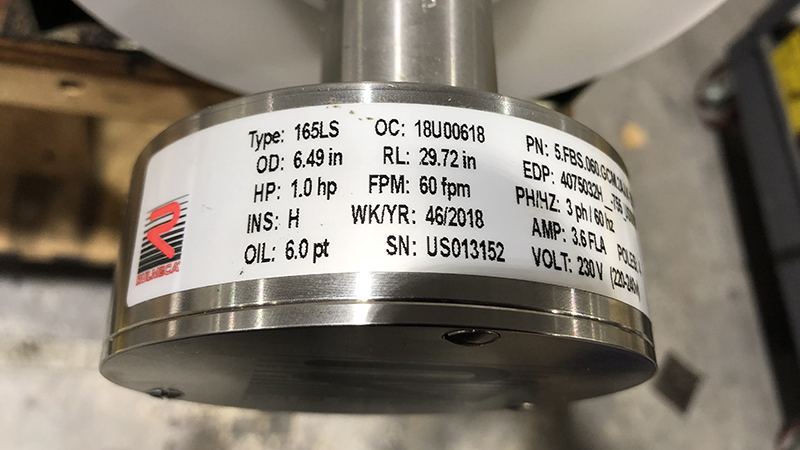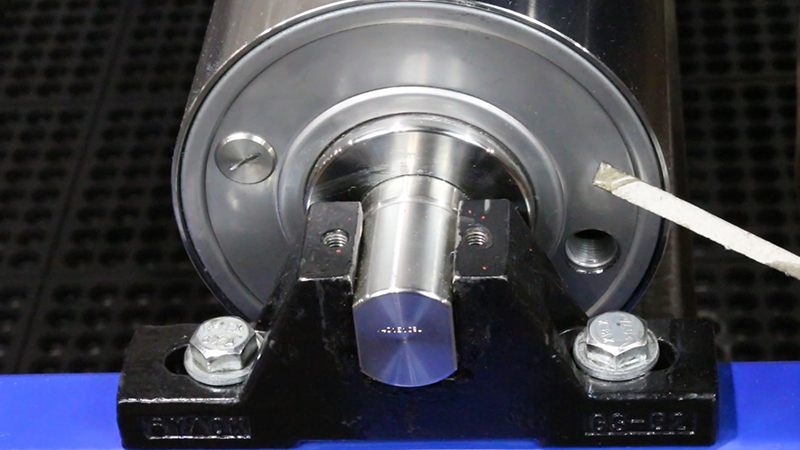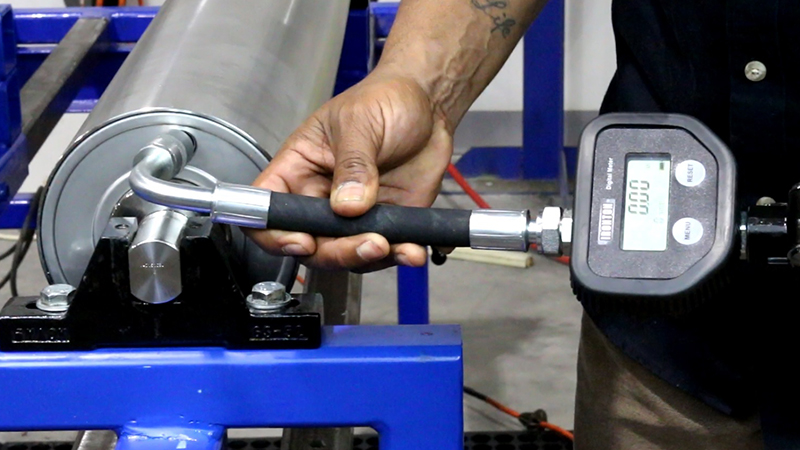
We supply Motorized Pulley belt conveyor drives, serving equipment manufacturers directly and end users through a network of independent distributors & local service providers throughout the United States and Latin America.
HOW TO CHANGE OIL IN SMALL DRUM MOTORS
This video explains how to change oil in small drum motors. These conveyor drives are especially popular in food processing and package handling applications. Use this video in conjunction with our growing library of tutorials on how to design and maintain bulk handling belt conveyors.
This tutorial is for users of Rulmeca Motorized Pulleys in food processing and unit material handling applications. This lesson applies to our range of models from 3.15 inch to 6.5 inches in diameter. We will cover why Rulmeca Motorized Pulleys contain oil, how to check it, and when and how to change it. All Rulmeca Motorized Pulleys are supplied with an appropriate quantity of oil, which is shown on the motor data plate, as you can see here.

The type of oil is dependent on the motor configuration and application. When maintaining a Rulmeca motorized pulley, be sure to match the quantity and specification of the factory supplied oil. When in doubt, contact Rulmeca Corporation and give us the product serial number. It can be found on the end of the shaft as shown here. Be sure to take special care when changing oil brands or specifications because of the possibility of oil incompatibility. Contact your local oil supplier for assistance in that matter.
The purposes of the oil are to continuously cool the internal motor while lubricating all gears and bearings. Synthetic, mineral, food-grade, low viscosity, and high viscosity oils are all available. Under normal operating conditions with a motorized pulley running continuously at full load, synthetic oil and synthetic food grade oil should to be changed after every 50,000 hours of operation. Mineral oil should be changed after every 20,000 hours of operation. To check the oil quantity, use your company’s lock out tag out safety procedures, then rotate the pulley until the two drain oil holes are at the 4 o’clock and 10 o’clock positions, as shown here. We have both full stainless steel IP69 and carbon steel construction pulleys. This procedure is valid for both configurations.
Remove the lower oil plug. When properly full, the oil level should be approximately at the bottom of the lower hole.

You can either look through the lower hole or use a clean wooden stick like a dipstick to verify that the oil is at the bottom of the lower hole. To check the condition of the oil, remove an oil sample from the lower hole, and examine its condition.

The oil’s cleanliness is always the best guideline for regarding the wear and condition of the gears and bearings and whether to change the oil immediately or delay the oil change. Note that the actual quantity of the oil for a given pulley model and face width may vary with motor power and shale profile. Therefore, it is essential to determine the actual quantity of oil required prior to beginning the changing of the oil.
To change the oil, simply rotate the pulley until the drain holes are at the 6 o’clock and 12 o’clock positions, as shown here. Then place a bucket beneath the lower oil plug and remove both oil plugs to allow the pulley to drain and vent. It may be necessary to tilt the opposite end to completely drain. To refill the oil, replace the lower oil plug after wiping off any sludge and residue from the oil plug magnet and wrapping the threads with Teflon tape.

Pour an appropriate amount of all through the upper hole using either an oil field pump or a funnel and measuring bucket. Finally, replace the upper oil plug after wiping away any sludge and residue from the oil plug magnet and wrapping the threads with Teflon tape.
We hope that you found this short tutorial useful. For more tips on conveyor drive design and maintenance, go to rulmecacorp.com or subscribe to our YouTube channel. Thank you very much.
